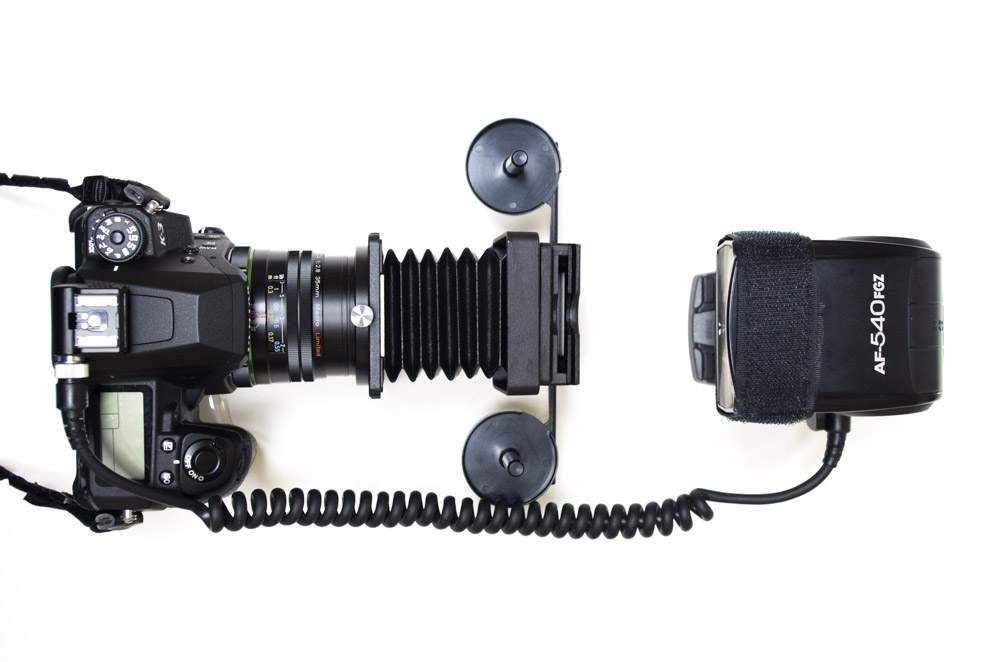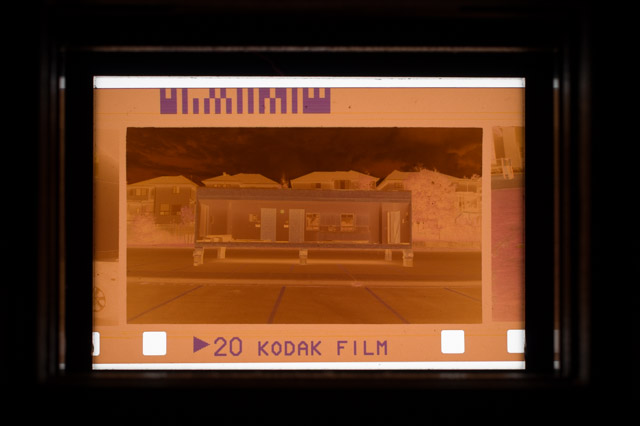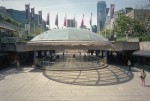Nov
2
2015

My Fuji Dl Mini is quite beat up so I thought I would make a drawing of one instead (see above image) The camera is a terrific blend of style and function. Its simple uncluttered look belies the power it has to produce quality images (perhaps my pictures aren’t to your taste but don’t blame the camera for that). Of all the small cameras that I have tried with a 28mm focal length it is the best. The lens is very sharp and has only a small amount of vignetting. It has some other nice attributes such as manual focus and the ability to suppress the flash. More pictures and information about this camera here 28mm Verticals The Sardine Tin Fuji Dl Super Mini Fuji DL super Mini
1 comment | tags: camera, Dl mini, Fuji, Fujifilm | posted in Cameras, Photography
Jul
7
2015

Again with the Fuji DL mini? Yes again, I like this camera to the point that I think I will try to find another one that isn’t so beaten up. As I was going into Vancouver or as I always remember it as a kid ‘going downtown’ I grabbed a roll of expired drug store 400 ISO film and slipped the camera into a pocket. Yes the results match but that’s okay its actually the look I’m after. More about this camera here 28mm Verticals The Sardine Tin Fuji Dl Super Mini Fuji DL super Mini
no comments | tags: film, Fuji | posted in Cameras, Photography
Sep
29
2014

I’m sorry Wallace I’m afraid I can’t do that.
That being scan APS film in its cartridge on a flatbed scanner. So my solution take a picture it lasts longer. Not everyone will have encountered APS film so here is a little recap. APS film is smaller than 35mm film and after developing and printing it is spooled back into its cartridge never to be seen again (That isn’t strictly true but when was the last time you took a roll of film in for re-prints). Okay re-prints are where….. this could go on for a while so forget all that. APS film in cartridge, needs scanning ect. ect.
The first thing that needs to be done is to get the film out of the cartridge. Start by removing the label 
Then crack the cartridge open  which will let you get at the little film nugget inside
which will let you get at the little film nugget inside  The images on film look like this at this point.
The images on film look like this at this point. 
Which may be cool and impress cell phone photographers but the orange mask necessary from optically printing the film makes everything look sickly not to mention the fact that the image is a negative. The next thing is to take the pictures of the film, in my case I’m using a slide duplicator, a flash and the Pentax DA 35ltd macro lens all of which you should have laying around (or not).

This yields a digital image that needs to be cropped and adjusted  It will be a different process depending on what software you are using but it can be accomplished in Lightroom by going to the tone curve and dragging the two ends vertically to their opposite corners this has the effect of making the image a negative which it already is which makes it a positive which is good, simple right? The next thing to do is then to drag the colour balance down to eliminate what is now a cyan cast. After this its a basic matter of making adjustments to the image to make it look correct. I should add though that after the manipulation of the tone curve all the levels adjustments are reversed so things such as increasing exposure makes it darker, fun yes? After all that you should end up with an image that looks like this which will probably make you want to pick up a digital camera unless you feel photography should be a difficult process in which case carry on.
It will be a different process depending on what software you are using but it can be accomplished in Lightroom by going to the tone curve and dragging the two ends vertically to their opposite corners this has the effect of making the image a negative which it already is which makes it a positive which is good, simple right? The next thing to do is then to drag the colour balance down to eliminate what is now a cyan cast. After this its a basic matter of making adjustments to the image to make it look correct. I should add though that after the manipulation of the tone curve all the levels adjustments are reversed so things such as increasing exposure makes it darker, fun yes? After all that you should end up with an image that looks like this which will probably make you want to pick up a digital camera unless you feel photography should be a difficult process in which case carry on.

1 comment | tags: APS, film, Fuji | posted in Photography
Sep
2
2014

It’s little cameras like this that remind me sometimes why I like film so much. The camera itself cost me next to nothing and even with the rising cost of film and processing if I shot 10 rolls of film a year with it (360 exposures) that would only amount to about $100 which is nowhere near what an equivalent digital camera would cost, that is if it existed. It has a fantastic 28mm f3.5 lens that is very sharp and contrasty. The extreme corners of the image do suffer and are not as sharp but all things considered it is possibly the best 28mm in a compact I have seen. The film I used in it was Kodak Ektar 100 which scans very well and creates very adjustable files. The single thing I like the most about this camera though is the manual focus settings. And the single thing I like the least is that any settings changes you make cause it to reset itself to auto flash where it fires more often than not. It may be shaped like a can of sardines but there is no denying it takes a quality picture. More info and pictures can be seen here Fuji Dl Super Mini
1 comment | tags: film, Fuji | posted in Cameras, Photography
Jun
6
2014

The Fuji Zoom Date 1000 is interesting in the world of film point and shoots for its zoom lens a Super EBC Fujinon 3.6x zoom lens; 28 ~ 100mm, f/5.8 ~ 10.5; 6 components, 6 elements and also the rear LCD and menu system. Although 28-100mm is a nice range to have, the lens is slow and has a lot of vignetting as seen in this image. 
The menu is somewhat unique because it has a four-way controller with a central menu button much like you now find on numerous digital cameras, however it has relatively few modes compared to a modern camera but that’s okay because your supposed to take pictures with it not play with the menu.

Ultimately the first try with this camera was not particularly impressive. The images lacked any of that sort of pop that a few other similar cameras have. For example the Canon Z90W or the Konica Zup28W but at least it betters the Sigma 28 AF Zoom which for all intents and purposes produces images with no corners.
no comments | tags: camera, film, Fuji | posted in Cameras, Photography
Dec
21
2013

I once again used my go to Pentax Z1p camera loading it with Fuji Superia film. I’ve included the picture of the lift truck despite the fact that I miss focused it, I was using the Vivitar 28mm close focus f2.0 lens. That just goes to show how difficult it is to focus manually in low light with a camera built for autofocus I thought I had it but clearly I did not.
no comments | tags: film, Fuji, Superia | posted in Photography, Processing
Aug
15
2013
A small fun colourful camera that shoots 16×9 pictures and verges on being miniature. That pretty much sums it up in one sentence.
The next sentence of course should be it uses APS film which hasn’t been produced for several years.

More about this camera Fuji Nexia Q1
2 comments | tags: APS, film, Fuji | posted in Cameras, Photography
Jul
27
2013


I’m often looking to expand my photography beyond the bounds of a single image either through multiple exposures or image pairs. Now I’ve found another tool the Fuji Rensha Cardia with its sixteen individual lenses. If the dimpled shutter release button isn’t enough to indicate that it was originally intended to record your golf swing then the icon of the guy swinging a golf club should probably drain the putt. The lenses can be released at two rapid speeds in one sequence or one at a time with the second button on the left. The sixteen little sub frames are recorded across two standard 35mm frames. Therefore the first frame contains the image from 1 to 4 on the top and 9 to 12 on the bottom.

I created animations from the individual images like from the image above
And experimented with the individual shutter release in images like the one bellow. There are many more things that can be done within the 16 frames

Yes you could shoot individual pictures with some form of digital camera or phone and then stitch them together but this is at least sixteen times more fun than doing that.
I put together a few animations that can be seen on Youtube
5 comments | tags: camera, film, Fuji | posted in Cameras, Photography, Processing






























































































































